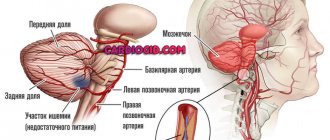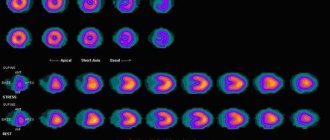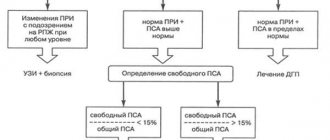Echocardiography with Doppler analysis is a diagnostic research method that is based on the reflection (echo) of ultrasound waves from the heart. With its help you can find out what condition the individual elements and valve apparatus are in. Echocardiography is often used to detect heart disease. The need to use this research method is determined by the doctor.
Echocardiography: what is it?
EchoCG is an effective research method. It is carried out using an electrocardiograph. The method is used to identify heart pathologies. Before using echocardiography, consultation with a specialist is necessary.
The examination is carried out using ultrasound. During the study, the image is displayed on the screen. The doctor has the opportunity to immediately identify abnormalities in work or pathological conditions. In some cases, a cardiac ultrasound is performed with Doppler to evaluate the speed and volume of blood flow.
This method is one of the first to be used in cases of suspected heart disease. The procedure is carried out in a hospital setting. Clothing is removed from the upper body. A gel is applied to the skin in order to obtain a more accurate result. The whole process takes no more than 15 minutes.
After receiving the results of the study, the doctor will consult the person in detail. If necessary, a treatment plan for the identified disease will be drawn up. More detailed information can be obtained from the video:
When is an examination required?
Due to the breadth of possibilities of cardiac ultrasound with Doppler (studying the characteristics of blood flow), there are also quite a lot of indications for its use. The procedure will definitely be recommended in the following cases, that is, if there is:
- abnormalities in chest x-ray results;
- pain in the chest area (especially on the left side);
- heart murmurs, shortness of breath, shortness of breath, weakness and fatigue;
- heart rhythm disturbances (arrhythmias, tachycardia, bradycardia);
- pathological changes when interpreting an ECG (electrocardiogram);
- swelling, coldness of the extremities, cyanosis (blueness of the nasolabial triangle);
- congenital and acquired during life defects of the heart or large vessels;
- prolonged fever or cough not associated with colds;
- coronary artery disease (CHD), history of myocardial infarction, arterial hypertension.
Chest pain is a good reason to consult a cardiologist
Doppler echocardiography is mandatory for patients undergoing cardiac surgery. The procedure can be carried out in this case repeatedly for the purpose of monitoring during the rehabilitation period and preventing possible complications. In addition, echocardiography with Doppler is often prescribed for newborns and children over one year of age who are not gaining weight well.
The procedure will help determine the cause - perhaps weight loss is associated with insufficient heart function, due to a congenital defect or other pathology of this organ. It is sometimes recommended to undergo an examination for people who are bothered by a headache, since the cause of such a symptom may be a blockage of one of the small vessels located in the area of the heart muscle by a tiny blood clot. In such cases, Echo-CG is the only way out to establish the correct diagnosis.
Features and Benefits
Echocardiography provides a detailed picture of heart health. The method is non-invasive and can be used by people of any age. Among the features of the study are the possibility of:
- identify pathology at an early stage,
- estimate the size of the heart chambers,
- check the condition of some extracardiac structures.
The examination does not cause any side effects. It can be used to diagnose diseases in both adults and children. The result will be obtained immediately after the study is completed. There is virtually no preparation required for echocardiography. For several days, you should avoid caffeine and other substances that can affect your heart rhythm.
Echo Doppler sonography provides even more information. Using this analysis, it is possible to detect ischemia, atherosclerosis and aortic aneurysm. Doppler measurements allow you to evaluate the speed and nature of blood flow. A cardiologist will be able to select the appropriate research method after a visual examination and study of the person’s medical history.
Important! To make an accurate diagnosis, it is necessary to use all available research methods, including laboratory tests. Before starting therapy, a comprehensive examination is always carried out.
Where can I get an EchoCG with Doppler?
There are 3 types of echocardiographic studies:
- M-echocardiography;
- Two-dimensional echocardiography;
- Doppler study.
With M-echocardiography, one sensor emits sound with a frequency of 1000-2000 pulses per second along one axis. As a result, an image of the heart is created as if “from the top of a mountain.” This type of echocardiography provides high-quality images over time. By changing the direction of the beam, cardiologists scan the heart from the ventricles to the left atrium and aorta.
With two-dimensional echocardiography, the doctor directs an ultrasound beam along an arc of 90° with a frequency of about 30 times per second and obtains an image in two planes. Using different sensor locations, you can obtain a high-quality spatial image that allows you to analyze the movements of heart structures in real time.
Using Doppler echocardiography, blood flow velocity and turbulence are determined. When sound encounters moving red blood cells, the frequency of the reflected signal changes. The magnitude of this change indicates the speed of blood flow. It is calculated taking into account certain characteristics of the sound beam.
Registration of signals in individual small areas makes it possible to determine the spatial localization of turbulence, which is characteristic of insufficiency, narrowing of the valves or blood shunting. Combining Doppler with imaging techniques allows cardiac output to be calculated.
Transthoracic echocardiography with Doppler study does not require complex preparation. The patient is asked to undress to the waist and lie down on the couch on his left side. In this position, the left side of the chest and the apex of the heart come closer. This allows you to get a better picture of the heart from a four-chamber position. The doctor applies gel to the area of the chest where the sensors are attached.
Their different positions allow you to clearly see all parts of the heart and take measurements with recording of performance indicators and sizes. The sensors that are connected to the echocardiograph do not cause discomfort or pain. From them, ultrasonic vibrations are transmitted to the human body. Acoustic waves first move in the tissues and are modified, and then return to the sensor.
Here they convert electrical signals that are processed by the echocardiograph. The change in waves is associated with changes in the condition of the internal organs. This is the difference between echocardiography and an electrocardiogram, which shows a graphical record of the activity of the heart rather than its structure. The results obtained are displayed on the screen in the form of a clear picture.
Transesophageal echocardiography of the heart with Doppler is carried out by cardiologists in cases where transthoracic echocardiography is hampered by certain factors: subcutaneous fat, muscles, ribs, lungs, prosthetic valves, which are acoustic barriers to the passage of ultrasonic waves.
It, like echocardiography through the chest, is three-dimensional. In this type of test, the doctor inserts a sensor through the esophagus, which is adjacent directly to the left atrium. This allows you to better view the small structures of the heart. The patient stops eating 4-6 hours before the test. The doctor treats the sensor with ultrasound gel and places it in the patient's esophagus, where it remains for about 12 minutes.
Stress echocardiography is performed to study the work of the patient’s heart under load. Such a load is carried out with the help of pharmacological drugs, causing increased work of the heart, and physical activity. Such a procedure does not always allow an objective assessment of the work of the heart, so doctors use echo programs.
This method of research makes it possible to detect hidden disturbances in the functioning of the heart, unnoticeable at rest. The procedure takes about 45 minutes. Doctors select the level of exercise for each patient depending on his age category and health status. The patient stops physical activity 3 days before the study, and 2 hours before the procedure begins, he stops eating and drinking.
Echocardiography with Doppler analysis can be done at an affordable price in Moscow at the Yusupov Hospital. To do this, make an appointment with a cardiologist online or by phone.
Head of the department of anesthesiology and resuscitation with intensive care and intensive care wards - anesthesiologist-resuscitator
As mentioned above, no preliminary preparation is required. Before the procedure, the patient is placed on the couch, preferably on the left side. The upper body is slightly elevated when Dopplerography of the heart is performed. The body is relaxed. The specialist stands with his or her back to the patient.
The sensor, as in conventional echocardioscopy, is lubricated with a special gel and moved over the skin over different areas of the heart. Some patients experience discomfort when coming into contact with the gel. As a result of technical processing of the sound of flowing blood, a characteristic hissing sound is heard.
After completion of the examination, the data obtained using an echocardiograph is deciphered. They are compared with normal values, taking into account the patient’s condition and age. Only a cardiologist can make an appropriate diagnosis.
At VERAMED, echocardiography with Doppler analysis is performed for a fee. The price of the service is affordable, thanks to which almost everyone can use it. The examination is performed by qualified diagnosticians using a high-precision ultrasound machine. If, in addition to echocardiography (ECHO), an ECG (electrocardiogram) is prescribed, it can also be performed in our medical centers.
Making an appointment at a preferred time, no long wait, a cozy atmosphere and convenient location of clinics in Zvenigorod and Odintsovo - all this will make your stay at the VERAMED MC even more comfortable.
Reviews about specialists, clinics, and procedures can be left on our website in the appropriate section.
Estimated parameters
Using echocardiography, the following parameters can be assessed:
- size of the heart, atria and ventricles,
- wall thickness and tissue structure,
- condition of the heart muscle,
- heart rate rhythm.
Echocardiography, which is combined with Doppler sonography, allows one to obtain indicators of cardiohemodynamics and identify pathologies of the heart muscle. When using color Doppler mapping (CDC), it is possible to see pathological blood flow into the left atrium directly during the scan.
Each parameter has its own standards. If deviations are detected, then it will be possible to judge the presence of pathology. Additional examinations may be prescribed. Also, a diagnosis can be made based on the data obtained.
The results obtained need to be deciphered. Only an experienced cardiologist can do this. If the examination is carried out urgently, then interpretation of the results of cardiac ultrasound is carried out immediately after the end of the procedure.
Scope of application of the method
Doppler echocardiography is possible due to the presence of red blood cells in the blood. It is from them that the ultrasonic signal is reflected, changing its frequency. Then the flow speed and its direction are measured. But what can be revealed using this method and what is the scope of its application? Let's give a few examples.
First of all, with the help of Doppler echocardiography it is possible to measure the direction and speed of blood flow not only in individual chambers of the heart, but also in their smaller compartments. What does this allow us to determine? For example, if blood moves from the left ventricle towards the left atrium, this indicates one thing: the patient has pronounced mitral valve insufficiency. And if a portion of blood is thrown from the aorta back into the left ventricle, aortic valve insufficiency occurs.
In addition, if you make a two-dimensional echocardiogram, based on it, calculate the area of the hole that allows blood flow, and also calculate the time of blood ejection, then you can easily calculate the amount (or volume) of blood that flows in a certain period of time through a certain part of the cardiovascular system. So, knowing the speed of blood flow in the ascending aorta, the cross-sectional area of the vessel, as well as the time of systolic ejection, one can find out what the volume of systolic ejection of the left ventricle is. Errors in calculations will be minimal. As a rule, they are associated with the inability to determine the exact diameter of the hole through which the blood passes.
In the same way, you can calculate the volume of blood that passes through a selected heart valve, intracardiac shunt or other areas in a certain time. Thanks to this, it is possible not only to record the insufficiency of the valve under study, but also to physically describe the volume of blood being thrown back. Another value is measured in the same way - the amount of intracardiac blood shunting. This is especially important in the presence of atrial or ventricular septal defects.
Who can it be prescribed to?
Echocardiography can be prescribed to absolutely everyone. There are no contraindications for this procedure. But there are categories of people for whom echocardiography may be difficult. Among the pathologies that may interfere with the examination are:
- inflammatory skin diseases in the chest area,
- severe deformation of the chest,
- bronchial asthma.
Heavy chest hair or large mammary glands can also become a hindrance. If echocardiography cannot be performed due to the individual characteristics of a person, other diagnostic methods are used. This type of diagnosis is often used to identify pathologies in childhood. Due to its complete safety, echocardiography is prescribed even at the slightest suspicion of heart problems.
There are no contraindications to Doppler ultrasound of the heart vessels. After receiving the results, the doctor will determine further actions. Ultrasound examination, which is combined with the Doppler effect, allows you to obtain the most accurate results about the condition of vital organs and blood vessels.
Conducting and decoding
This examination procedure is performed on patients who have undergone heart surgery. In addition, prolonged headaches may also be an indication for examination, since the origin of the pain may have a more serious cause than it might seem at first glance. Echocardiography is often ordered in young children who are not gaining weight well.
Indications for echocardiography are:
- abnormalities identified during previous chest examinations;
- heart rhythm disturbance;
- heart murmurs;
- pain symptoms in the chest area that have unknown causes;
- ischemia, acquired and congenital defects, arterial hypertension, myocardial infarction.
Echocardiography with Doppler analysis and stress echocardiography are mandatory for pregnant women if:
- there were births of children with congenital heart defects in the family;
- previous pregnancies were interrupted by miscarriage;
- diagnosed with diabetes;
- a pregnant woman was diagnosed with rubella;
- antibiotics were prescribed.
Echocardiography is prescribed for pregnant women at 20-23 weeks; children can undergo it at any age. How is echocardiography with Doppler analysis performed?
Cardiac echocardiography with Doppler and Color Doppler may also have contraindications if the patient has been diagnosed with:
- acute myocardial infarction;
- heart failure;
- renal or liver failure;
- dissecting aortic aneurysm.
Heart study data is deciphered as follows. First of all, the specialist assesses myocardial contractility, and then checks the indicators of the left ventricle. A thorough check of its functional characteristics, size and condition of the cavity is carried out, the presence of scars and various types of tumors, their sizes and the effect they have on the walls of the bloodstream are also examined. If the procedure was performed during physical activity, it is considered to have gone well if the following signs are present:
- the walls of the ventricle move evenly;
- there is an increase in the ejection fraction;
- the walls thicken.
It is considered that the study did not have a very good result if:
- ejection fraction is less than 35%;
- the walls of the right ventricle increase in size;
- weak mobility of the ventricular walls is visible.
The results of the study should be analyzed by a cardiologist who will compare the normal values with those obtained during the study of this patient. Only on the basis of cumulative data, taking into account all the circumstances, can a specialist make a diagnosis. No special preparation is needed for echocardiography with Doppler analysis.
Echocardiography of the heart is of enormous importance, for example, in establishing diagnoses for atrial tumors and tricuspid valve stenosis. Thanks to this study, the doctor is able to create a holistic picture of the disease based on important and very accurate diagnostic information.
Thus, echocardiography with Doppler analysis can be considered an extremely informative modern method for diagnosing cardiac pathologies. It allows doctors to check the structure of the heart, monitor its function, as well as the movement of blood flow, its turbulence and speed. All information obtained during the study is extremely important for determining the correct diagnosis.
But nevertheless, it is always necessary to remember: the results of the study can be influenced by a variety of factors, for example, the type and quality of the equipment used, as well as the presence or absence of relevant experience of the doctor conducting the study. An incorrect diagnosis due to an ultrasound examination usually leads to the prescription of unnecessary medical tests, medications and even surgical interventions.
During the study, the doctor measures the size of the heart, the thickness of its walls, and the computer calculates its performance and blood flow parameters. The entire study is recorded as a video file with sound so that other doctors, such as cardiologists and cardiac surgeons, can analyze them and evaluate the results.
Indications for echocardiography
Echocardiography is used for suspected heart disease. The reasons for the procedure are:
- dyspnea,
- heart murmurs (found out during an in-person examination with a therapist),
- dizziness and loss of consciousness,
- complaints of pain in the chest area,
- tachycardia and arrhythmia.
Doppler ultrasound is used to assess the condition of blood vessels. As a rule, the Doppler method is used to assess the pumping function of the central circulatory organ and measure blood flow velocity.
It is worth noting that echocardiography is used not only for diagnosis, but also for monitoring and assessing the effectiveness of therapy for heart disease. The examination can identify the following diseases:
- IHD,
- atrial fibrillation,
- tumor formations,
- thrombosis,
- heart disease.
In some cases, the method is used as part of a preventive examination. If a person undergoes medical examination, an echocardiogram may be prescribed. Regular examination in a hospital setting, if necessary, will help to begin treatment for a dangerous disease on time.
For testing, a person can go to a clinic or diagnostic center. It will be problematic to decipher the results on your own, so you will need to consult an experienced doctor.
Principles of the procedure
This procedure, unlike ultrasound of the abdominal organs, does not require any preliminary preparation. The patient only needs to be in a good mood. After all, stress and anxiety can have a negative impact on the examination results.
If the patient is a smoker, then two hours before the test it is necessary to stop using cigarettes. This must be done for the reason that nicotine causes vascular contraction, which can negatively affect the information content of the research being carried out. Doppler ultrasound of the heart can be performed by a trained diagnostician, ultrasound technologist, or attending physician who has experience in performing ultrasound examinations.
Before the procedure, you must remove all jewelry. In the case of a cardiac ultrasound, it is also necessary to get rid of outer clothing. The diagnostic process is carried out in the supine position. A special gel must be applied to the skin of the patient being examined. It is necessary to increase the permeability of ultrasonic waves. The duration of the procedure is from fifteen minutes to half an hour.
It is worth paying attention that the correctness of the results obtained is influenced by the equipment used in the hospital, as well as the qualifications of the specialist. When using modern equipment, the images are fine-grained and clearer, providing an opportunity to examine heart pathologies in detail. However, in the absence of certain experience, a specialist is unlikely to be able to consider them.
Echocardiography with Dopplerography
Echocardiography with Dopplerography provides information about the condition of the heart vessels. Ultrasound waves during Doppler sonography are reflected from moving objects. This type of ultrasound is used to assess blood flow speed and other indicators of cardiohemodynamics.
If necessary, aortic blood flow can be visualized through color mapping. Color allows you to quickly determine the intensity of blood flow and its direction. Echocardiography with Doppler analysis and color circulation is a modern examination that allows you to detect latent pathologies in order to carry out treatment later.
By identifying cardiac and vascular pathologies at an early stage, more effective therapy can be carried out. Your doctor will help you choose the appropriate type of ultrasound. If you need to find out what condition the heart is in, then it is enough to use a simple echocardiogram. In other cases, more complex research techniques are used to obtain more information.
Indications for performing ECHO CG with Doppler analysis
Echocardiography with Doppler analysis allows you to obtain a visual image of the heart and blood vessels. Transthoracic ECHO-CG is performed if the following indications exist:
- Congenital and acquired heart defects;
- Cardiac ischemia;
- Infective endocarditis;
- Acute coronary syndrome;
- Heart failure;
- Pulmonary hypertension of unspecified nature;
- Pulmonary embolism;
- Myocarditis;
- Pericarditis;
- Cardiomyopathy;
- Syncope of unknown origin.
ECHO cardiac CG with Doppler is used for screening examination of the closest relatives of people who died suddenly or had signs of heart failure at a young age, and athletes taking part in competitions. The study is necessary for patients who are planning cardiac surgery.
Echocardiography is performed after invasive procedures (balloon plasty of the coronary arteries, coronary angiography), to assess the effectiveness of drug therapy or cardiac surgery, with a sharp deterioration in the clinical course of the disease. Cardiologists examine the patient using echocardiography for the following purposes:
- Monitoring the size and function of the left ventricle in the presence of diffuse myocarditis, heart failure, and the severity of valve stenosis;
- Calculation of systolic pressure gradient (in case of hypertrophic cardiopathy);
- Definitions of pulmonary hypertension (with an atrial or ventricular septal defect that impairs hemodynamics).
Using transesophageal ECHO-CG of the heart with Doppler, sources of systemic embolism are identified, the structure, size, degree of mobility, and location of attachment of cardiac tumors are assessed. The study is necessary for the diagnosis of bacterial endocarditis, diseases of the thoracic aorta (dissecting aneurysm, atherosclerotic lesions of the aorta), and congenital heart defects.
Echocardiography with Doppler analysis (the price at the Yusupov Hospital is lower than in other Moscow clinics) is used to assess the condition of the heart valve apparatus (cusps, subvalvular structures, careful assessment of the degree of regurgitation) in case of acquired heart defects, including before an upcoming operation, dysfunction of prosthetic valves .
Cardiologists at the Yusupov Hospital do not perform transesophageal ECHO-CG with Doppler for pathologies of the esophagus (tumors, diverticula, fistulas, narrowings, esophagitis) and bleeding from the upper gastrointestinal tract. Echocardiography with Doppler analysis has an important advantage: the doctor has the opportunity to analyze subsequently obtained quantitative indicators and make a conclusion based on them.
Doppler Options
Dopplerography of the heart can take place in several modes: one-dimensional, two-dimensional and M-mode. The most popular is a two-dimensional type of examination (B-mode). When using it, the device actively moves around the area under study, displaying a two-dimensional image on the screen. After the examination, the doctor receives an echocardiogram, which provides information about the size of the heart, indicators of cardiohemodynamics and many other static data. In addition, while viewing the image, hidden pathologies can be identified.
In modern diagnostic centers and clinics it is possible to use any type of ultrasound examination. The doctor will prescribe a specific diagnostic procedure based on the person’s characteristics. In some cases, based on the results of one study, several others may be prescribed to obtain the most accurate information.
Important! To ensure that the result is not distorted, you must comply with all the doctor’s requirements before and during the examination. You may need to temporarily stop taking certain medications a few days before your echocardiogram.
Color Doppler scanning
One of the most important and modern types of echocardiography is color Doppler echocardiography. It was invented recently due to improvements in pulsed echocardiography. Its principle is to obtain a two-dimensional image of the heart and measure blood flow rates in it. Then the areas where the blood moves towards the sensor are painted in one color, and where from it - in another. Typically red and blue.
Color scanning reveals the speed of blood flow, its direction, the presence of turbulence in the flow and distortion of the Doppler spectrum. Thanks to this method, you can quickly obtain results regarding the spatial orientation of the flows. And this makes it possible to evaluate the regurgitation ability of the valves.
But color Doppler examination can be influenced by many factors, although the accuracy of this method is extremely high. For example, the following:
- pressure difference in the bloodstream;
- heart rate;
- blood volume;
- kinetic energy of blood flow;
- level of pre- and afterload;
- operator experience;
- technical capabilities of the device itself, etc.
But in general, the color Doppler ultrasound scanning method is one of the most accurate and effective methods in cardiology.
Why is echocardiography with Doppler ultrasound performed?
To obtain detailed information about the work of the heart, it is necessary to evaluate nearby vessels and arteries. EchoCG with Dopplerography allows you to simultaneously study the heart and blood vessels. The method is completely safe, so it is used everywhere. It can be used to identify congenital defects or acquired diseases. In addition, highly effective therapy is selected based on the results obtained.
A timely study can save a person’s life. Many pathologies are asymptomatic and only modern diagnostic tools can help identify them. If you need to comprehensively assess the work of the heart, echocardiography with the color flow mode is used.
The method has many advantages, while it has practically no disadvantages or any contraindications. The widespread use of various types of ultrasound to detect heart disease makes it possible to effectively treat dangerous diseases.
Carrying out echocardiography and Doppler analysis: what is it, the essence of the study
The heart is the most important organ in the human body. It is responsible for moving blood through the vessels. Heart dysfunction is one of the current medical problems that attract specialists to solve them and choose ways to identify various diseases. A widely used diagnostic technique is echocardiography (EchoCG) with Doppler analysis. What kind of research is this? How is it carried out and what can it be used to diagnose in sick people?
Decoding EchoCG
A cardiologist is capable of decoding. After receiving the result, the person goes to him for an appointment. The echocardiogram reflects the following parameters:
- left ventricular myocardium mass,
- wall thickness outside of cuts,
- volume of blood ejected
- sizes.
Doing decryption work on your own is extremely problematic. Even if a person has some indicators that do not correspond to the norm, this does not always indicate pathology. Sometimes this is a variant of the norm, which is an individual feature.
If, according to the results of the examination, everything is fine in a person, then the doctor will give general recommendations that will help reduce the likelihood of heart pathologies.
Diagnostic capabilities
It is impossible to give a qualitative assessment of the functional abilities of the heart and large vessels located close to it without studying blood flow. Therefore, almost all modern systems designed to perform echocardiography are equipped with Doppler equipment and corresponding software. This allows simultaneous diagnosis by Echo-CG and Doppler.
According to the results of the study, the doctor is able to:
- determine pathologically altered direction of blood flow;
- calculate the effective area of the mitral and tricuspid valves;
- assess turbulence in the normal direction of blood flow;
- measure the pressure in the heart chambers, the diastolic capacity of the left ventricle, the volume of blood ejected by it during systole, and other characteristics of cardiohemodynamics.
Echo-CG, combined with Doppler, provides cardiologists and sonologists with maximum information that allows them to identify various heart defects and diseases.
Results of the Dopplerography study
The examination results are interpreted by the attending cardiologist. By assessing indicators and images and comparing them with other tests and studies, the doctor makes a diagnosis or evaluates the effectiveness of the prescribed treatment.
The final video in this article shows the picture that an ultrasound diagnostician sees on the monitor during a Doppler examination of the renal vessels. By the way, experienced hypertensive patients or diabetics will inevitably have to undergo this type of examination.
Doppler echocardiography and assessment of valve insufficiency
Doppler echocardiography reveals more than just blood flow problems. It also allows you to assess how severely the valves are stenotic. In this case, the well-known property described by Bernoulli's law is used. According to which, knowing the change in the speed of blood flow, it is possible to determine the pressure gradient between adjacent chambers of the heart. The more stenotic the valve, the greater the pressure gradient will be. That is, if there is a high pressure gradient between the left atrium and the ventricle, the mitral valve is very severely stenotic.
So, Doppler echocardiography is now the only method for assessing and identifying valve insufficiency (in particular, the aortic, mitral valve), and their stenosis (including a quantitative description of the degree of stenosis).
It allows you to identify heart defects and assess the degree of intracardiac blood shunting. Of course, one can object, because stenosis of the mitral, triscupid and other valves can be determined using two-dimensional echocardiography. But only with the help of the Doppler research method can one quantify the degree of this stenosis.
What is a Doppler study?
Doppler ultrasound uses the Doppler effect, known in physics. This is one of the ways to study blood flow in any vessels of our body. What does Doppler show? – The speed and direction of blood flow in the vessels, the width of the lumen in them, allows us to determine the pressure in the vessel. The working instrument of Doppler research is ultrasound.
Now let's figure out what the Doppler effect is and what Doppler sonography shows. In this study, reflected ultrasound waves are recorded, the analysis of which allows one to evaluate blood flow in the system of arteries and veins. With its help, you can evaluate the blood flow passing through the main vessels of the limbs and neck, and if a violation of the latter is detected in the cervical arteries, then this allows you to begin to fight a possible stroke in advance. Blood clots may be found in the veins of the legs, which can break off and obstruct blood flow to the lungs.
A Doppler study during pregnancy can assess the blood supply to the fetus and promptly detect, for example, its hypoxia.
During the examination, the sensor of the device touches the skin above the vessel being examined. It sends and receives reflected ultrasonic waves, which are amplified by a microphone. Sound waves reflect differently from different objects, such as blood cells. The movement of the latter changes the reflected signal according to the Doppler effect. If there is no blood flow, then there is no change in the signal. Information from the reflected ultrasound is processed by a computer, which displays the blood flow in the vessels as an image. This information can be saved for subsequent analysis when Doppler decoding of the results is done.
Dopplerography of the heart: what is it, evaluation of results, cost
Dopplerography of the heart is an instrumental method for examining the heart muscle and blood vessels, which allows one to accurately diagnose many cardiovascular diseases and assess the state of blood flow. The method is non-invasive, painless and safe, that is, penetration into the internal environments of the body does not occur, which is a big plus for the patient.
The procedure is identical to ultrasound of internal organs. It can be prescribed to pregnant women without having a negative effect on the unborn baby. The method allows you to assess the anatomical structure of a muscular organ, the presence of congenital abnormalities or a disease process.
Features of the structure of the heart, which can be seen on ECHO graphy
The heart muscle is a hollow organ consisting of 2 atria, 2 ventricles and a valve apparatus for regulating and directing blood flow. The left ventricle and left atrium are chambers of the heart muscle that fill with arterial blood. They are separated from each other by the mitral valve.
And the right ventricle and right atrium are a chamber with venous blood, which is separated from each other by the tricuspid valve. The chambers of the heart muscle are separated from each other by the interventricular and interatrial septa.
Many vessels flow into the heart, collecting blood from various organs, namely:
- the inferior vena cava is a vessel that connects to the right atrium and collects blood from the lower extremities and torso;
- superior vena cava - provides the outflow of blood from the head and upper extremities;
- pulmonary trunk - these are the arteries emerging from the right ventricle into the lungs, where the blood is enriched with oxygen;
- The 4 pulmonary veins are vessels filled with oxygen-rich blood that connect to the left atrium;
- The aorta is the largest vessel emerging from the left ventricle, through which arterial blood is sent to the systemic circulation.
Heart ultrasound with Doppler, what is it and what is this study prescribed for? This instrumental research method allows the doctor to obtain more complete information about the condition of large and medium-sized vessels, as well as the heart muscle. Such a study makes it possible to give a conclusion about the speed of blood flow in the vessels, its direction, and to diagnose early changes in the vessel wall or its diameter.
Using Doppler sonography, atherosclerotic damage to the coronary vessels, aortic aneurysm, and various heart defects are detected. This examination is mandatory for pregnant women to exclude congenital heart disease.
Indications and contraindications for Doppler ultrasound
Instrumental examination of the cardiovascular system using Doppler sonography is carried out according to certain indications, such as:
- suspicion of heart disease or monitoring the dynamics of the disease;
- determination of blood flow velocity in the coronary vessels in coronary heart disease (CHD);
- hypertension in the pulmonary circulation;
- dynamic monitoring of the state of the cardiovascular system after cardiac surgery;
- suspicion of blood clot formation - if this pathology is present, determine its location and parameters;
- suspicion of thickening of the wall of the heart muscle and impaired mobility.
This technique, if indicated, is carried out regardless of age, both for newborn children, to exclude heart disease, and for adults.
There are no contraindications for Doppler ultrasound of the heart vessels, as well as no side effects.
In addition to Dopplerography of the heart, more complex diagnostic techniques are performed according to indications:
- Duplex scanning is a frequently used technique that combines Doppler ultrasound and B - mode research. This combination allows a specialist to immediately study not only blood flow, but also blood vessels. In this case, Doppler ultrasound determines disturbances in the blood flow system, and duplex determines the cause of this pathology. This method allows you to diagnose not only circulatory disorders, but also a defect of the interventricular or interatrial septum, stenoses of varying degrees, insufficiency of the heart muscle valves and other defects of the cardiovascular system.
- Triplex scanning - this technique combines three methods at once, that is, heart Doppler, B - mode and color Doppler mapping. In this case, the area of blood flow towards the sensor is highlighted in red on the monitor screen. The higher the speed, the lighter the red hue. The direction of blood from the zone sensor is highlighted in blue. If turbulence occurs, the display changes to yellow or green.
- Tissue Dopplerography - this technique determines the violation of the movement of myocardial tissue. That is, is there a focus of ischemia in the heart muscle or the presence of scar tissue after a heart attack.
These studies are highly accurate methods for determining pathological changes in the cardiovascular system, especially in the early stages of development.
Doppler examination of large vessels and heart
Assessment of the activity of the cardiovascular system consists of studying blood flow in large vessels and chambers of the heart. When diagnosing, a combination of Doppler examination and ECHO cardiography is performed.
But sometimes, conducting an examination using a transthoracic approach can be difficult due to the severity of subcutaneous fatty tissue. In this case, transesophageal access is used, when you can get as close to the heart as possible. It allows you to most accurately diagnose difficult-to-detect heart defects, simultaneously performing ultrasound scanning of the heart and Doppler sonography of blood vessels.
Doppler examination of blood vessels in pregnant women
When is cardiac ultrasound with Doppler ultrasound performed in pregnant women and what does it give? Indications for this examination may include reasons from both the pregnant woman and the unborn baby. In the first case, it is hypertension with the presence of clinical symptoms. In the second case, this is the child’s low activity.
This technique allows you to assess the degree of blood supply to the unborn baby, the patency and lumen of the umbilical vein, and the heartbeat of the growing organ.
The results after Doppler sonography may be without deviations from the norm, namely:
- dimensions, cross-section and lumen of blood vessels, as well as their position without deviations from normal parameters;
- the blood flow is free, without any obstacles, both in the expectant mother and in the unborn baby;
- there are no blood clots in the veins;
- blood supply to the fetus is complete.
Pathological abnormalities during Doppler ultrasound of the heart can manifest themselves in the following form:
- difference in blood flow between left and right sides;
- reducing the cross-section of the vessel;
- presence of a blood clot or aneurysm;
- slowing down the speed of blood flow and, as a result, the degree of stenosis;
- the presence of varicose veins.
Carrying out such a diagnostic study allows us to identify and carry out therapeutic measures for this pathology.
Valid values
The Doppler ultrasound interpretation indicators for the adult population will be the following values:
- blood flow speed – through the aortic valve – up to 1.7 m/sec;
- mitral valve – 0.6 – 1.3 m/sec;
- pulmonary valve – up to 0.9 m/sec;
- tricuspid valve – 0.3 – 0.4 m/sec;
- the ratio of peaks E and A in the left ventricle in the young contingent is up to 2 or more;
- in middle age - decreases to 1 or slightly more;
- in old age – less than 1;
- the ratio of velocities in systole and diastole in the left ventricle – in the young contingent – is less than 1;
- in adulthood and old age – more than 1;
- the maximum speed of retrograde blood movement in the left ventricle is up to 35 cm/sec.
If there are deviations from the norm in the results of Doppler ultrasound, the patient is referred for a consultation with a cardiologist to decide on treatment.
What can be diagnosed using cardiac ultrasound
This diagnostic technique allows you to accurately diagnose cardiac pathology of both congenital and acquired nature, namely:
- identification of developmental defects of the cardiovascular system even in fetal development or at the birth of a child. These are tetralogy of Fallot, coarctation and stenosis of the aorta, pulmonary stenosis, atrial and interventricular septal defects. Various congenital complex malformations of the heart muscle are often diagnosed, which require mandatory surgical intervention;
- acquired lesions of the mitral valve due to rheumatism;
- left ventricular hypertrophy;
- atherosclerosis of the coronary vessels, accompanied by stenosis;
- cardiac ischemia;
- cicatricial changes in the myocardium due to a heart attack;
- aortic aneurysm.
How Doppler modes work is described in this video.
Modern devices for diagnosing diseases of the heart and blood vessels allow performing ultrasound examinations at a high level. Vascular Dopplerography, in combination with cardiac ultrasound, has a number of advantages over other research methods, such as:
- high quality images;
- visualization of individual elements of organs that are inaccessible for research by other methods;
- the ability to track small details of the research object;
- is a non-invasive and safe diagnostic method with no contraindications;
- the method does not require the introduction of contrast agents into the body for examination;
- diagnostics can be carried out over time repeatedly, as needed;
- the method allows you to observe the work of the heart and blood vessels in real time;
- is an indispensable research tool in obstetric practice.
Cost of the procedure in Moscow
Depending on the clinic, equipment, and qualifications of doctors, the cost of Doppler ultrasound of the heart will vary. The price range for this study in Moscow is from 1000 rubles to 3500 rubles.
Source: https://uzi.guru/grud-klet/serd/vidi/dopplerografiya-serdtsa.html
conclusions
Doppler echocardiography is developing rapidly, new sensors are being created that record minimal movements and pathologies. The presence of color Doppler sonography is only a small confirmation of this. Nowadays, not a single study of cardiac activity is complete without this minimally invasive method of examination. Moreover, even if a classic echocardiographic study in M-mode was performed, any experienced cardiologist will prescribe an additional Doppler study. After all, the characteristics of the movement of blood flow, its speed, direction are an important element in the diagnosis of any heart disease, be it coronary heart disease or a defect.
Doppler echocardiography is an absolutely safe method. It is recommended to be used even to assess the functioning of the cardiovascular system of newborns and the fetus inside the womb. This is practically the only method with which it is possible to identify any cardiac abnormalities in the early stages of their development, while obtaining the most complete picture.











